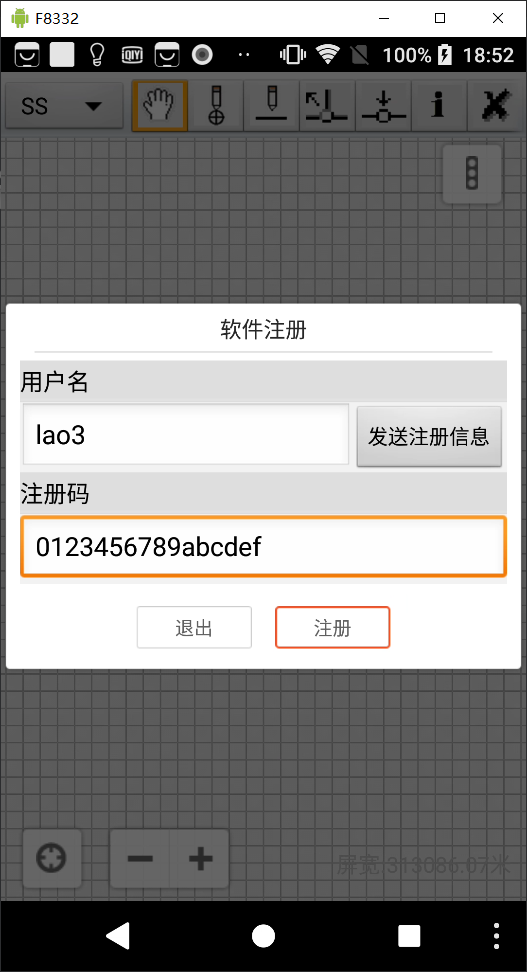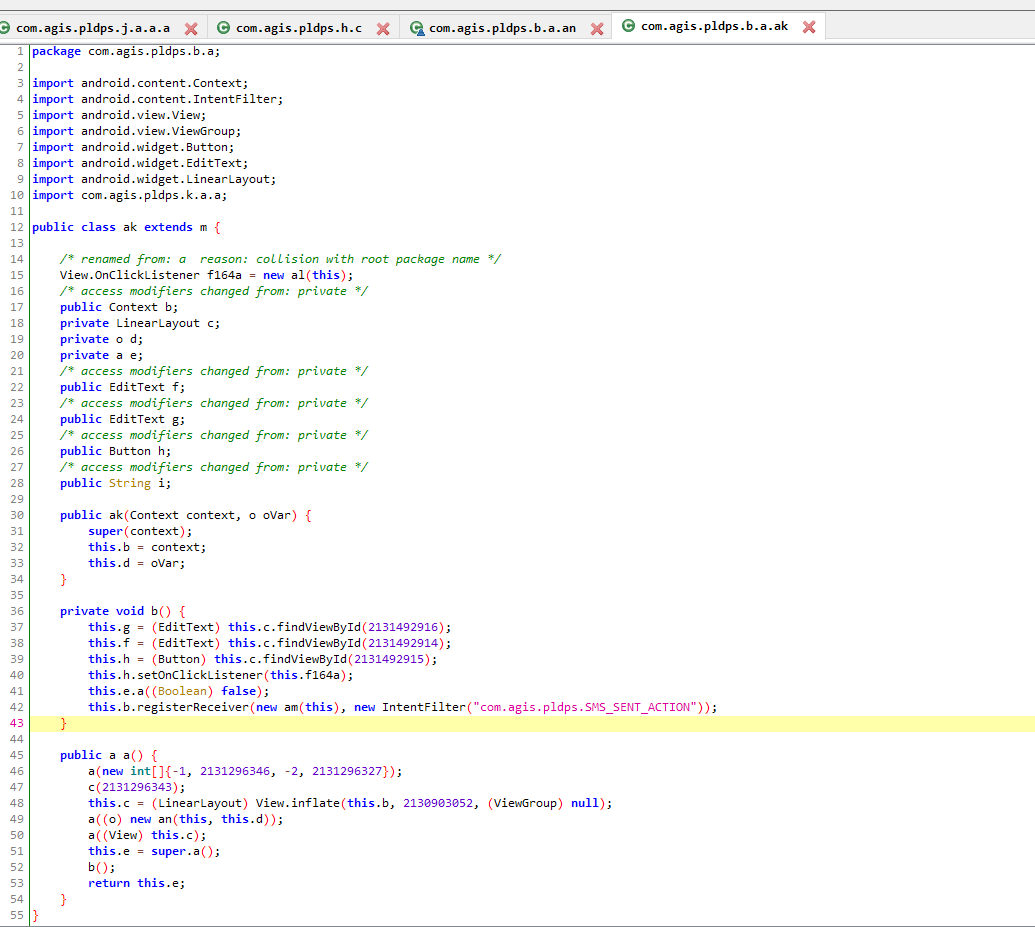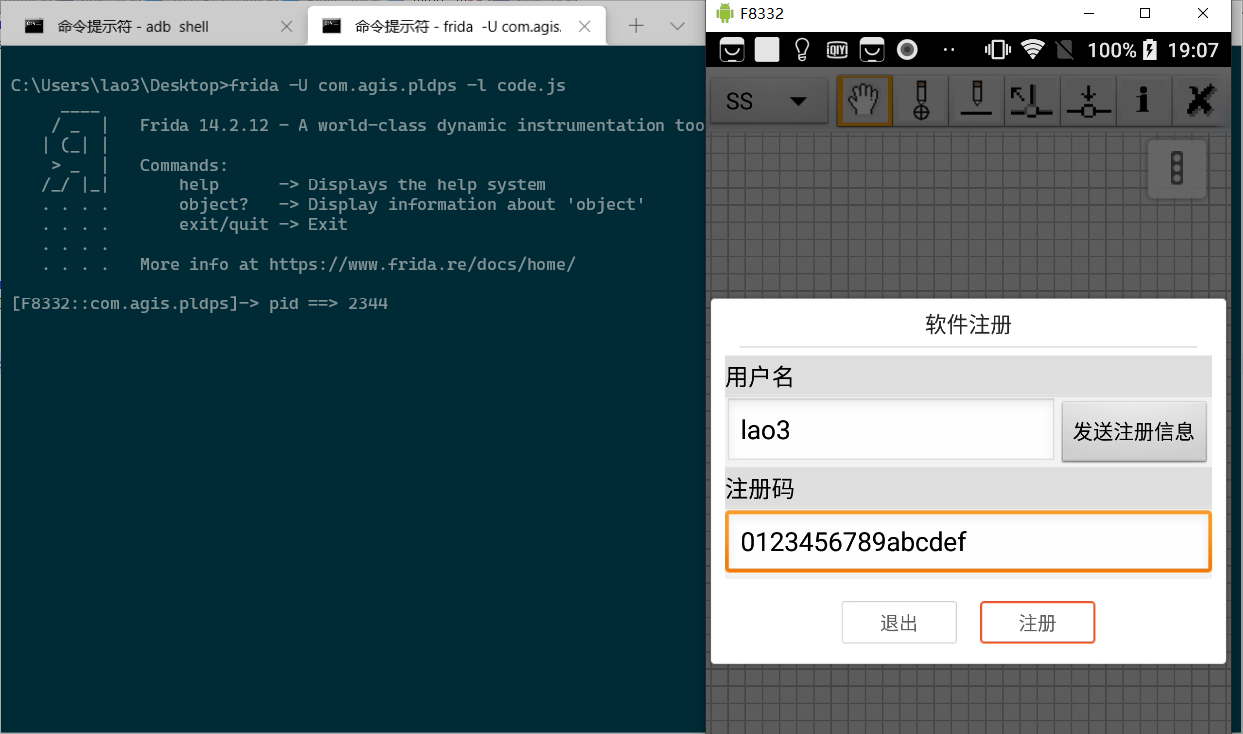Zyspps for android简单的注册码分析
app名称:zyspps
作者:lao3
分析的版本是v1.0, 不过应该是通杀所有版本
一、注册码校验定位
-
运行后,弹出注册窗口,随便输入用户名和注册码,点击注册后该APP直接强制结束.

-
原本想通过资源定位,发现类和方法变量全部混淆成abc之类的,很难读懂. 然后从log也没看出什么关键信息,也可能我漏掉了.

-
考虑到大多APP一般是通过killProcess()或者exit()结束APP,所以我们从这里入手试试. 直接上frida hook掉
function hook_java(){ Java.perform(function(){ var process = Java.use("android.os.Process"); process.killProcess.implementation=function(pid) { console.log('pid ==>',pid); } }) } function main(){ hook_java(); } setImmediate(main)再次点击注册后,APP并没有结束, 证明确实是调用Process.killProcess()方法强制结束APP

通过打印堆栈信息
console.log(Java.use("android.util.Log").getStackTraceString(Java.use("java.lang.Exception").$new()));定位到, 调用com.agis.pldps.j.a.a.a类下的方法a进行校验注册码
package com.agis.pldps.h; import android.content.DialogInterface; import android.os.Bundle; import android.os.Process; import com.agis.pldps.b.a.o; import com.agis.pldps.j.a.a.a; import com.agis.pldps.j.f; class b extends o { b() { } public void b(DialogInterface dialogInterface, Bundle bundle) { if (new a(f.f()).a().booleanValue()) { super.b(dialogInterface, bundle); } else { Process.killProcess(Process.myPid()); } } }到这里就比较清晰了,
b.a().a(“regsoftkeyusername”)获取输入的用户名/注册码
public Boolean a() { this.c = a(this.f288a, b.a().a("regsoftkeyusername")); if (this.c != null) { this.b = a(this.c); TelephonyManager telephonyManager = (TelephonyManager) this.f288a.getSystemService("phone"); String a2 = b.a().a("regsoftkeyvalname"); if (a2 != null && a2.equals(b(String.valueOf(Settings.Secure.getString(this.f288a.getContentResolver(), "android_id").toUpperCase()) + telephonyManager.getDeviceId()))) { return true; } } return false; }注册码校验的完整类代码
package com.agis.pldps.j.a.a; import android.content.Context; import android.provider.Settings; import android.telephony.TelephonyManager; import android.util.Base64; import android.util.Log; import com.agis.pldps.f.b; import com.esri.core.internal.io.handler.c; import java.security.NoSuchAlgorithmException; import java.security.spec.InvalidKeySpecException; import javax.crypto.Cipher; import javax.crypto.SecretKeyFactory; import javax.crypto.spec.PBEKeySpec; import javax.crypto.spec.SecretKeySpec; public class a { /* renamed from: a reason: collision with root package name */ private Context f288a = null; private byte[] b = null; private String c = null; public a(Context context) { this.f288a = context; } private String a(Context context, String str) { try { return a(SecretKeyFactory.getInstance("PBKDF2WithHmacSHA1").generateSecret(new PBEKeySpec((String.valueOf(str) + context.getPackageName()).toCharArray(), (String.valueOf(str) + Settings.Secure.getString(context.getContentResolver(), "android_id").toUpperCase()).getBytes(), 256, 128)).getEncoded()); } catch (InvalidKeySpecException e) { e.printStackTrace(); } catch (NoSuchAlgorithmException e2) { e2.printStackTrace(); } return null; } private String a(byte[] bArr) { return Base64.encodeToString(bArr, 3); } private byte[] a(String str) { return Base64.decode(str, 3); } private String b(String str) { if (str == null || str.length() == 0) { return str; } try { Cipher instance = Cipher.getInstance("AES"); instance.init(1, new SecretKeySpec(this.b, "AES")); return a(instance.doFinal(str.getBytes(c.f704a))).toUpperCase(); } catch (Exception e) { Log.w(a.class.getName(), "encrypt", e); return null; } } public Boolean a() { this.c = a(this.f288a, b.a().a("regsoftkeyusername")); if (this.c != null) { this.b = a(this.c); TelephonyManager telephonyManager = (TelephonyManager) this.f288a.getSystemService("phone"); String a2 = b.a().a("regsoftkeyvalname"); if (a2 != null && a2.equals(b(String.valueOf(Settings.Secure.getString(this.f288a.getContentResolver(), "android_id").toUpperCase()) + telephonyManager.getDeviceId()))) { return true; } } return false; } public Boolean b() { this.c = a(this.f288a, b.a().a("regsoftkeyusername")); if (this.c != null) { this.b = a(this.c); TelephonyManager telephonyManager = (TelephonyManager) this.f288a.getSystemService("phone"); String a2 = b.a().a("regsoftkeyvalname"); if (a2 != null && a2.equals(b(String.valueOf(Settings.Secure.getString(this.f288a.getContentResolver(), "android_id").toUpperCase()) + telephonyManager.getDeviceId()))) { return true; } } return false; } }
二、注册码分析
获取注册用户名,手机android_id,使用PKDF2生成AES密钥…然后对android_id(大写)+imei 进行AES加密,再次对加密结果进行BASE64编码(大写)得到最终的注册码 与 我们输入的注册码进行比对~
三、注册机实现
# -*- coding: utf-8 -*-
# @Time : 2021/8/12 21:59
# @Author : lao3
# @File : zyspps_keygen.py
# @Dec : zyspps_keygen
import base64
from hashlib import pbkdf2_hmac
from Crypto.Cipher import AES
...
...
...
# 手机IMEI和android_id
deviceId = '865166028011578'
androidId = 'AA51B2B3149156A4'.upper()
username = 'lao3'
keyGen = KeyGen()
reg_code = keyGen.GenRegCode(username, deviceId, androidId)
print(f'用户名:{username},注册码:{reg_code}')
说明
完整的KeyGen代码因为限制,就没完整上传…样本比较简单,而且分析流程已经很详细…可自己动手实现
